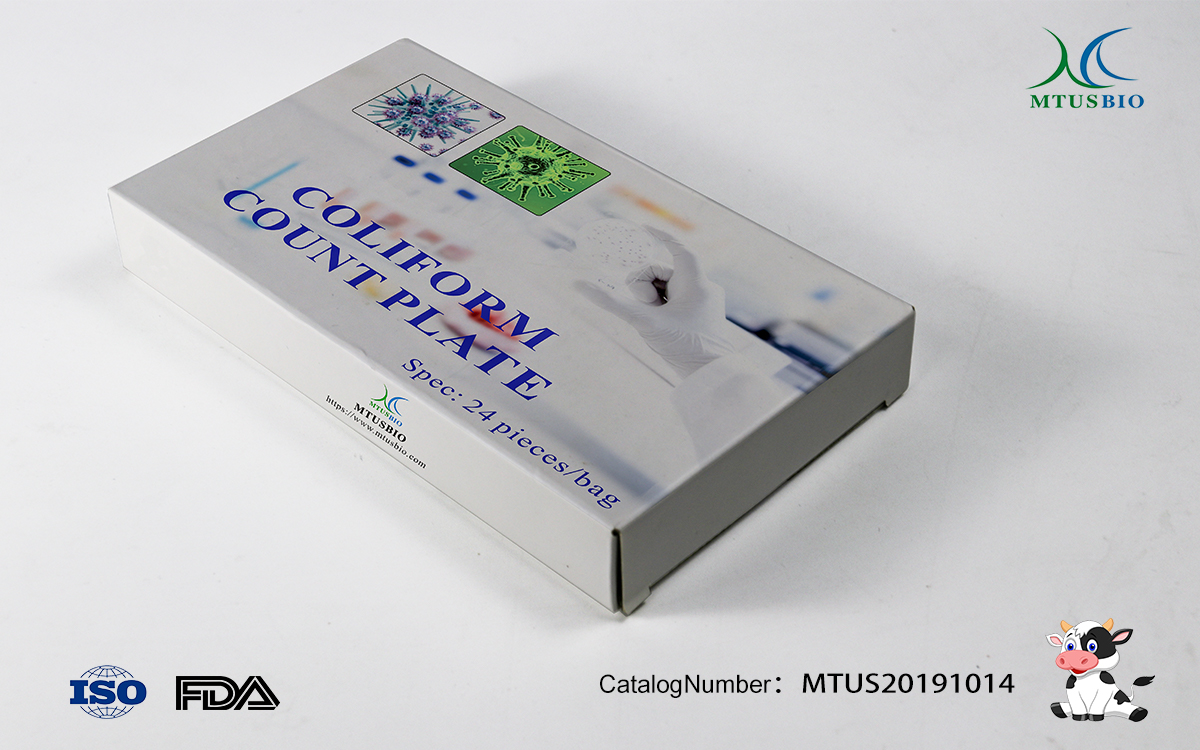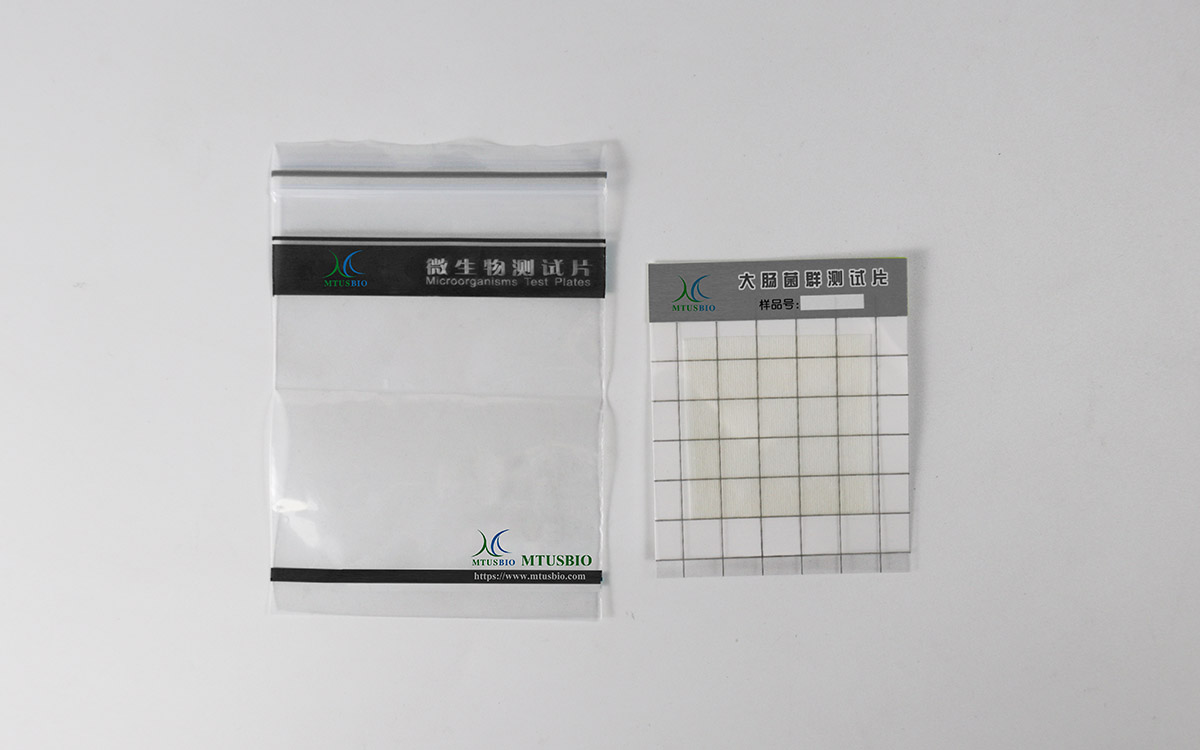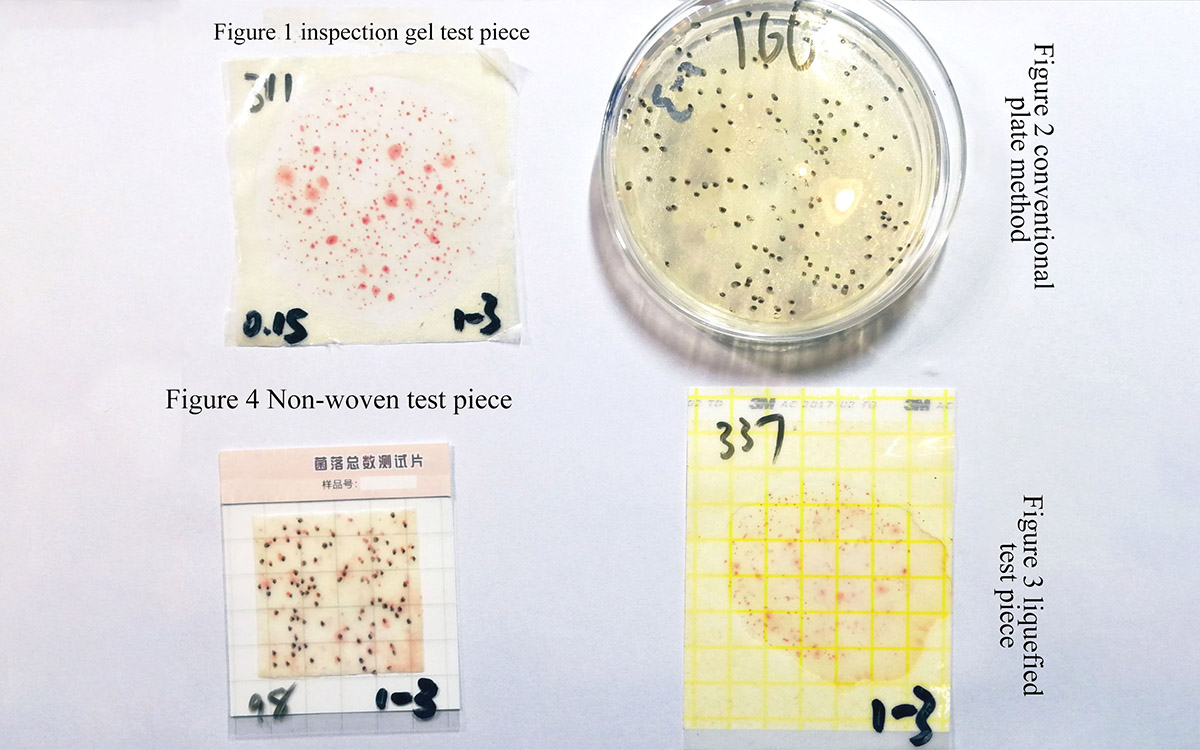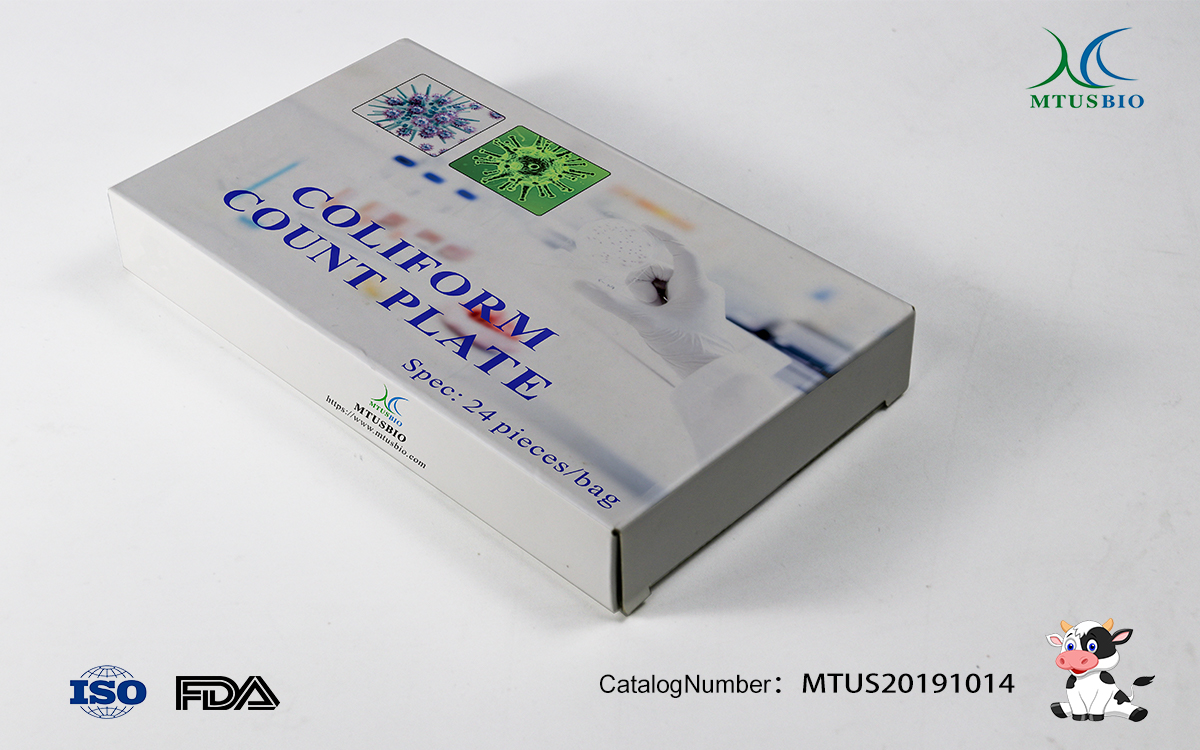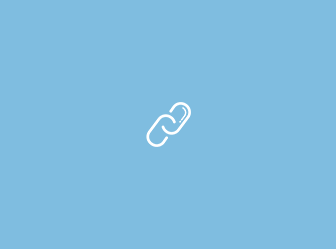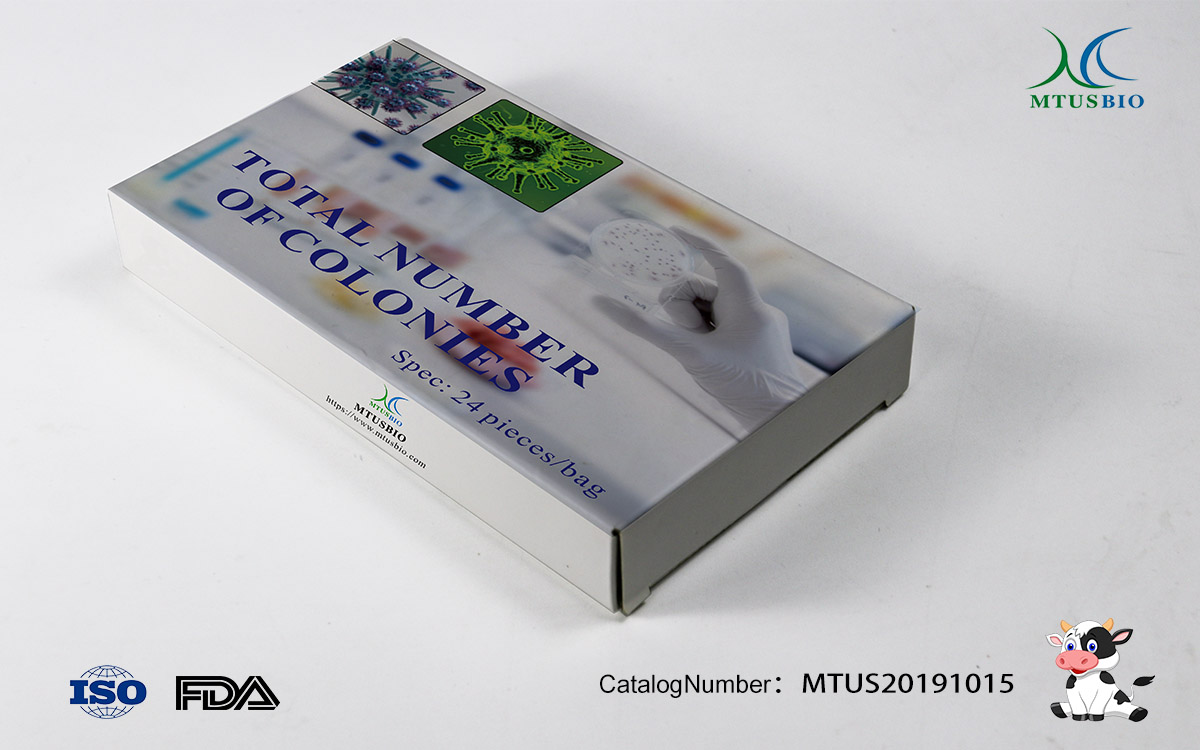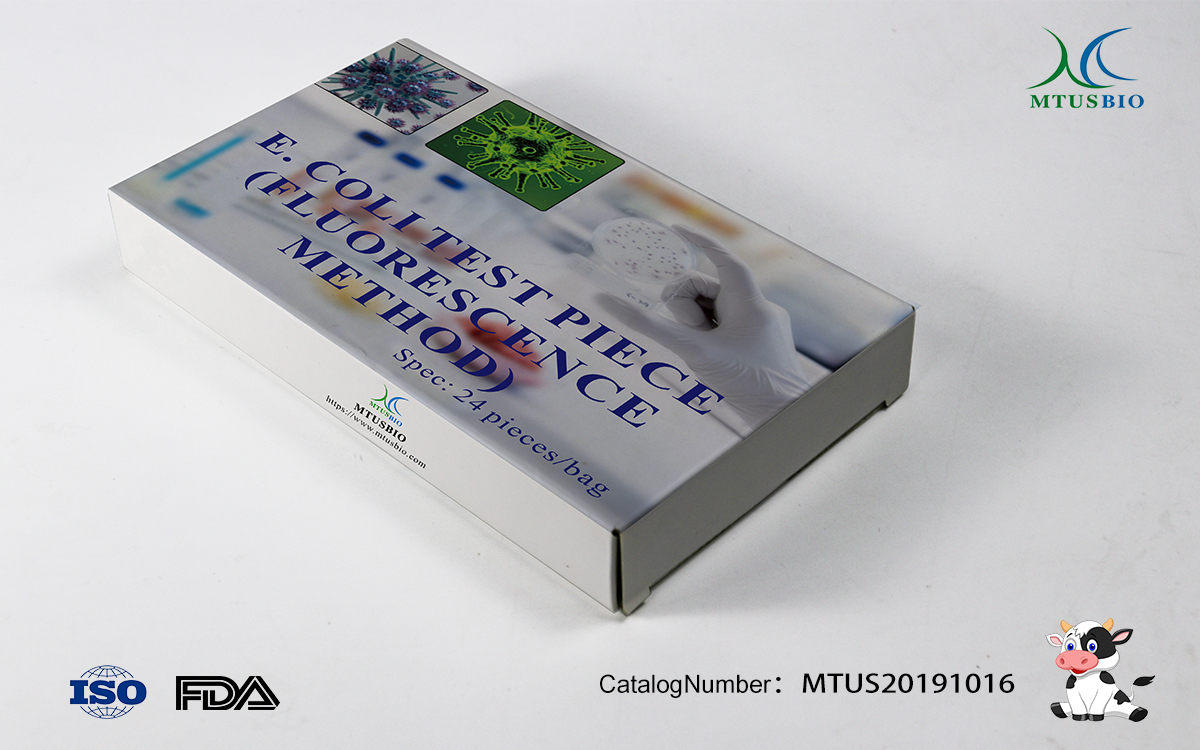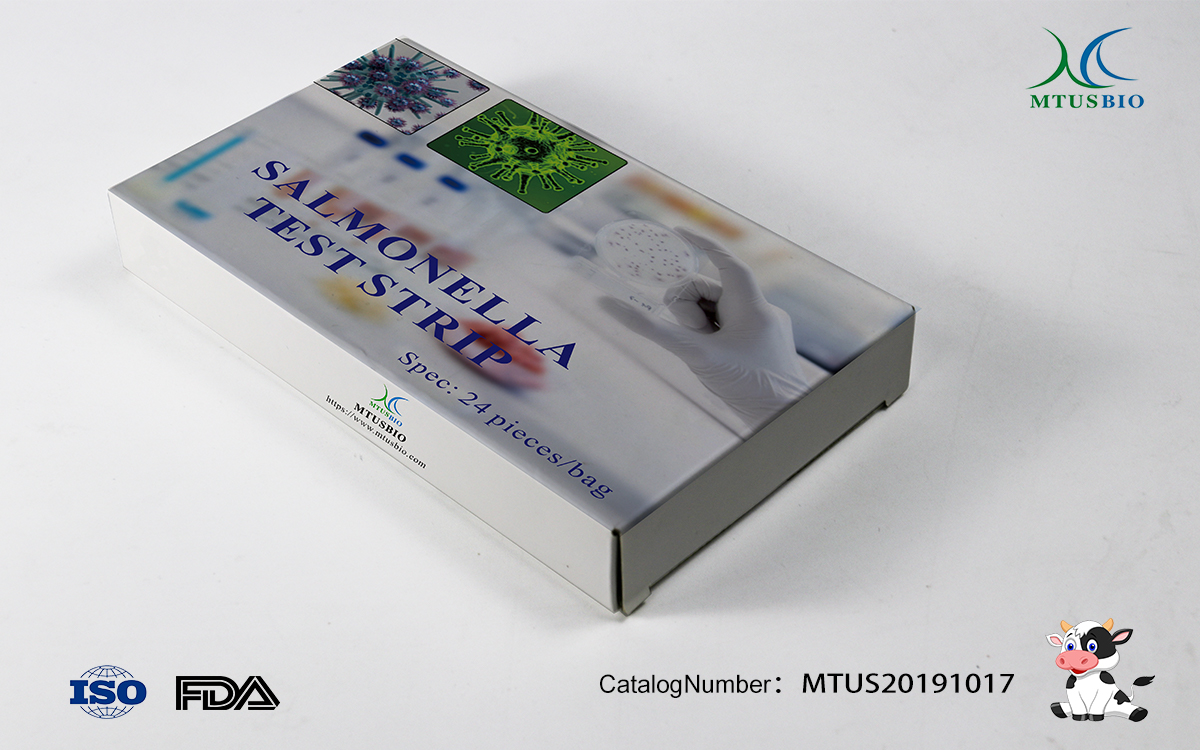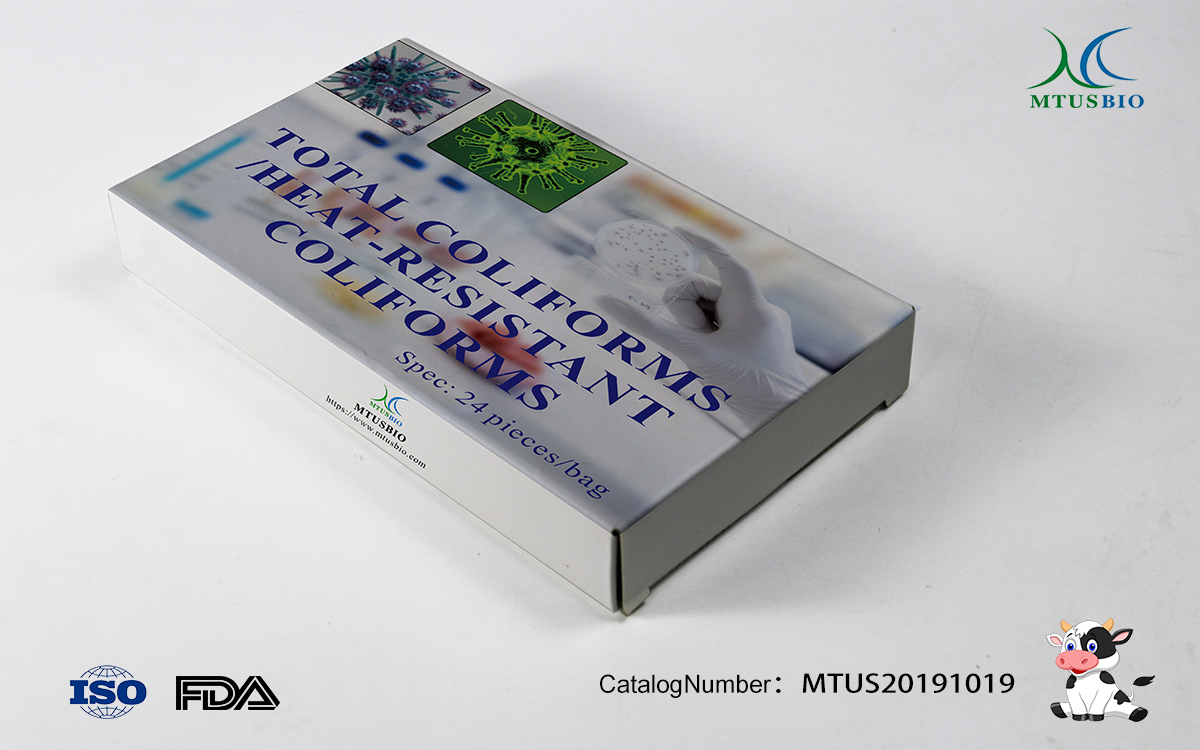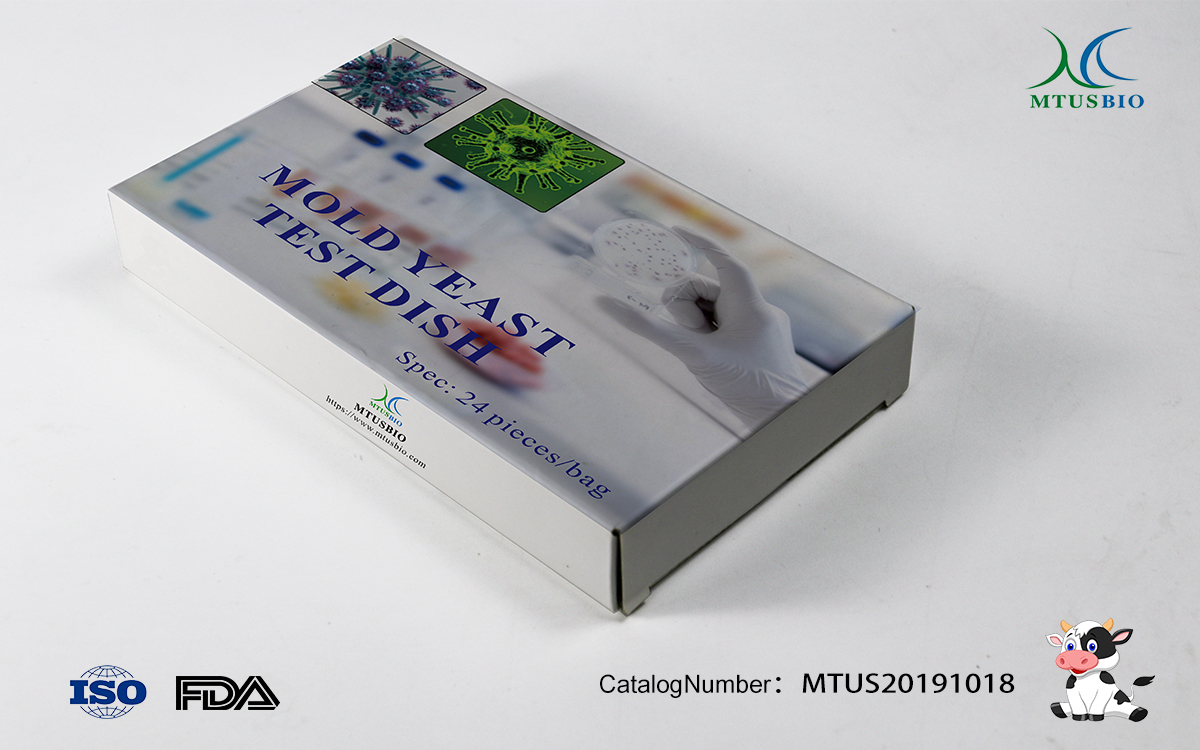Spec: 24 pieces/bag
Details: Detection of coliform in food, drinking water and raw material.
2. Using method
2.1 Sample preparation: Prepare the 1:10 solution by placing 25mL (g) of sample
into 225mL of sterilized phosphate buffer solution or sterilized saline, then prepare
1:100 solution by sucking 1mL of solution (1:10) into 9mL of sterilized phosphate
buffer solution or sterilized saline.
2.2 Inoculation: Select 2~3 appropriate diluted solution to do the test for ordinary
food, while for some liquid sample which has little coliform, directly suck original
liquid to do the test. Place coliform count plate onto sterile experiment table, uncover
the film on the surface. Suck 1mL of solution with sterile pipette, and then drip it
slowly and evenly onto the count plate, cover the film gently and stand it for 10s to let
the medium solidify. Inoculate two count plates for each dilution, and in the meantime
do a blank control.
2.3 Culture: Superimpose these count plates and place them back into original
ziplock bag. Seal it well and put it in the incubator at 36℃±1℃ for 15~24hs with the
transparent side up. The quantity of superimposed plates should not be more than 12.
3. Results
3.1 Those show blue spots after culture are coliforms. Select the count plates of which
the colony quantity is between 15CFU and 150CFU to do the count.
3.2 If the colony numbers on count plates from two serial dilutions are both between
15CFU and 150CFU, multiply the average number of colonies by corresponding
dilution multiple as the result data.
3.3 If the colony numbers on count plates from all the dilutions are less than 15CFU,
multiply the average number of colonies on the minimum dilution multiple count
plates by minimum dilution multiple as result data.
3.4 If no colony was found on all the count plates, report the result in terms of less
than one multiplied minimum dilution multiple.
3.5 If the colony numbers on count plates from all the different dilutions are more
than 150CFU, count the average number of colonies on count plates of maximum
dilution, then multiply it by the maximum dilution multiple as result data. Or count
colonies in one or two squares having representative colony distribution to get the
average number of colonies per square, and then multiply this number by 20 (the
count plate area is 20cm 2 ) as report data.
Use CFU/mL or CFU/g as report unit.













